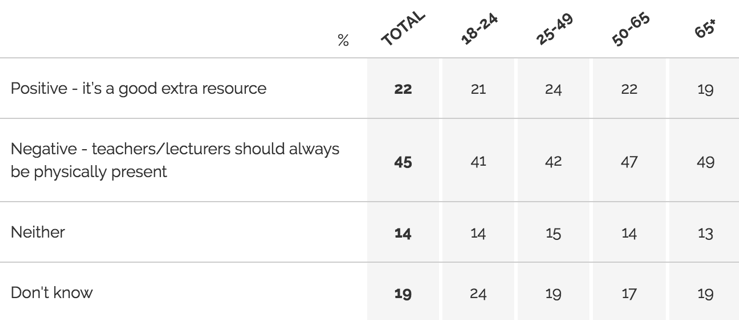Imperial College Business School launches first live hologram lectures
Students at Imperial College London will soon be lectured by holograms

Imperial College Business School has become the first institution in the world to use live holograms as part of its lectures.
The technology was unveiled during a “Women in Tech: The Inside Story” event. In a panel featuring four speakers, two were present on stage and two appeared as holograms from Los Angeles and New York.
This technology aims to overcome limitations of traditional teaching methods. Faculty members who are travelling will be able to continue teaching students whilst away. For popular lectures, the speaker’s image can be projected in multiple locations simultaneously. It will also allow global educators and experts to speak to students without having to travel to the UK.
David Lefevre, Director of Imperial College Business School Edtech Lab said: “Rather than replacing or reducing real-life lectures, the hologram technology will provide greater flexibility for academics...and widen the scope for Imperial to invite global leaders and influencers from industry to give talks to students, therefore enriching the learning experience.”
He continued: “We believe these holograms have a much greater sense of presence [than video conferences]. The lecturers can really interact."
The Business School hopes to start deploying holograms in teaching during the current academic year. They have already made plans to use this technology to allow a lecturer to talk to a business school in Spain next February.
The holographic telepresence technology was developed by AHRT Media, a hologram company based in Toronto, and is being adapted by the Business School’s Edtech Lab.
AHRT Media has a global network of “capture studios”, in places including Los Angeles and Singapore, and also offer a portable capture kit. To capture their image, the speaker sits against a dark backdrop in the studio and is lit from both sides. The image is transmitted and projected onto a glass screen on stage, which is placed in front of a backdrop controlled by a software to create the illusion of depth. They will appear as life-size 3D figures wherever they are projected.
The speakers will have a camera link of the room streamed back to their location in real time, allowing them to respond to audiences and answer questions.
The technology is a cheaper and less complex alternative to the ‘Pepper’s Ghost’ technique, which has been used by French presidential candidate Jean-Luc Melechon, and in the entertainment industry to project Michael Jackson’s image during the 2014 Billboard Music Awards. The equipment needed to set up Pepper’s Ghost can cost tens of thousands of pounds each time, whereas, according to Dr Lefevre, AHRT’s method “runs at the low thousands each time so, for the first time, universities can afford it”.

Not everyone is so sanguine about the technology. A YouGov survey found that 45% of respondents thought hologram lectures were a bad idea and that lecturers should always be physically present. Only 22% thought it was a beneficial resource.
Professor Francisco Veloso, Dean of Imperial College Business School, said: “Investing in new technology is a vital part of our strategy to create more flexible and inspiring learning experiences. We are keen to grow our digital visibility as a business school and the new hologram represents the pioneering work our Edtech Lab is undertaking in this area.”








